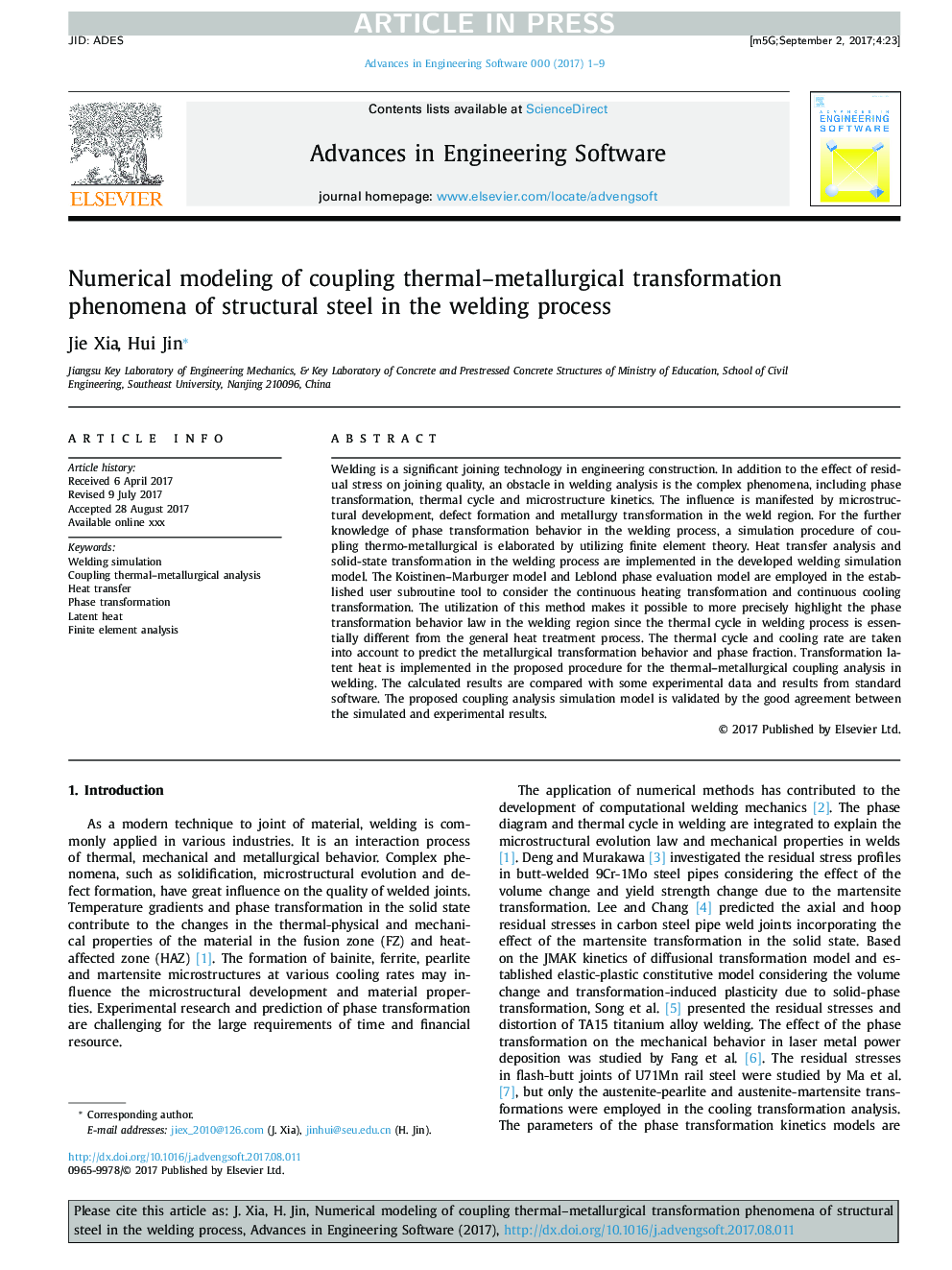| Article ID | Journal | Published Year | Pages | File Type |
|---|---|---|---|---|
| 6961425 | Advances in Engineering Software | 2018 | 9 Pages |
Abstract
Welding is a significant joining technology in engineering construction. In addition to the effect of residual stress on joining quality, an obstacle in welding analysis is the complex phenomena, including phase transformation, thermal cycle and microstructure kinetics. The influence is manifested by microstructural development, defect formation and metallurgy transformation in the weld region. For the further knowledge of phase transformation behavior in the welding process, a simulation procedure of coupling thermo-metallurgical is elaborated by utilizing finite element theory. Heat transfer analysis and solid-state transformation in the welding process are implemented in the developed welding simulation model. The Koistinen-Marburger model and Leblond phase evaluation model are employed in the established user subroutine tool to consider the continuous heating transformation and continuous cooling transformation. The utilization of this method makes it possible to more precisely highlight the phase transformation behavior law in the welding region since the thermal cycle in welding process is essentially different from the general heat treatment process. The thermal cycle and cooling rate are taken into account to predict the metallurgical transformation behavior and phase fraction. Transformation latent heat is implemented in the proposed procedure for the thermal-metallurgical coupling analysis in welding. The calculated results are compared with some experimental data and results from standard software. The proposed coupling analysis simulation model is validated by the good agreement between the simulated and experimental results.
Related Topics
Physical Sciences and Engineering
Computer Science
Software
Authors
Xia Jie, Jin Hui,
